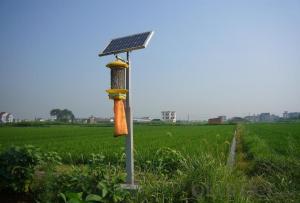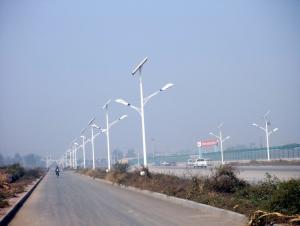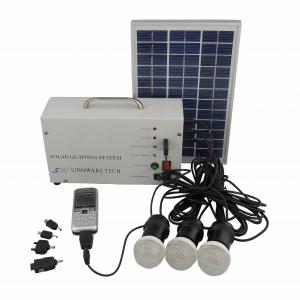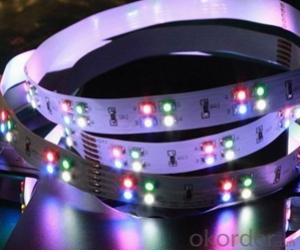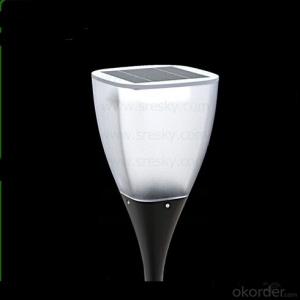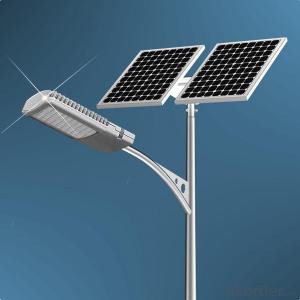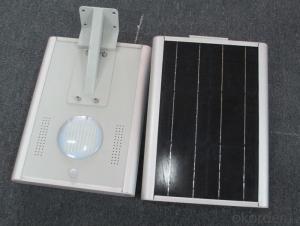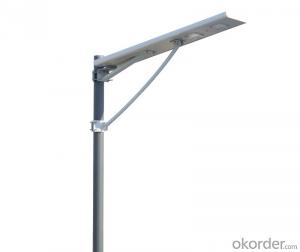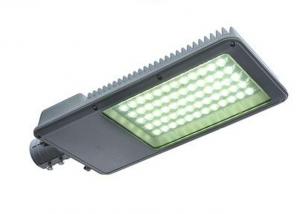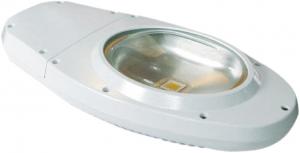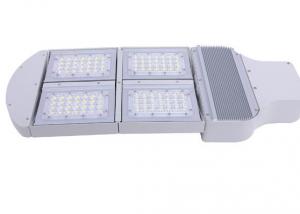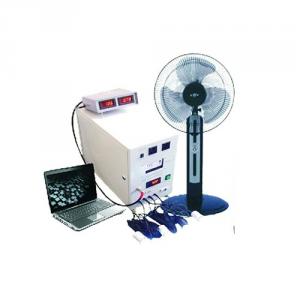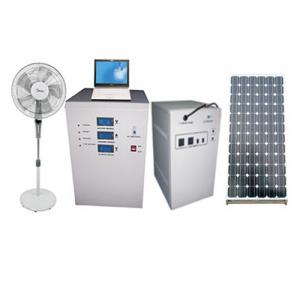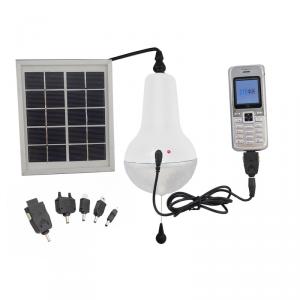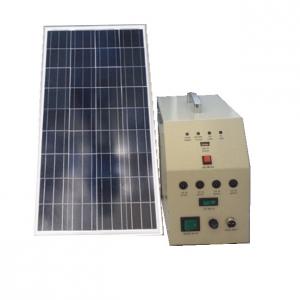Photovoltaic Solar Insecticidal Light System
- Loading Port:
- Tianjin
- Payment Terms:
- TT or LC
- Min Order Qty:
- 50 set
- Supply Capability:
- 50 set/month
OKorder Service Pledge
OKorder Financial Service
You Might Also Like
1. Structure of Photovoltaic Solar Insecticidal Light System
Solar Street light is composed of LED light source, battery, solar panel, controller and lamp pole. Photovoltaic Solar Insecticidal Light is equipped with solar panels which transfer solar energy into electricity. The transferred electricity powers the insecticidal light. Our solar insecticidal lighting device works in respecting the principles of "Phototaxis" and "Chemotaxis" to increase the insecticidal effect and the area under the influence.This product is highly suitable for remote region without immediate access to power grid,such as orchards, tree farms, outdoor work sites and nature reservations.
2. Main Features of Photovoltaic Solar Insecticidal Light System
colloid storage battery or LFP storage battery,
scientific controller for charging and discharging control;
which helps extend the lifetime to 5-10 years and reaches the same lifetime as the whole light products and avoids trouble of frequent changing storage battery and related costs.
high effect LED light source: lightening effect is 100% better than normal energy saving lamp, and the lifetime can be extended til 100,000 hours.
lamp pole: light and long, with aluminium profile, easy for transportation and installation, ensuring longer lifetime for use.
all-weather lightening model function:
adjust power output of LED light source according to electricity collected during the daytime
durable waterproof controller: water resistance protecting level up to IP68,
assuring controller lifetime up to 5 years.
3. Photovoltaic Solar Insecticidal Light System Images
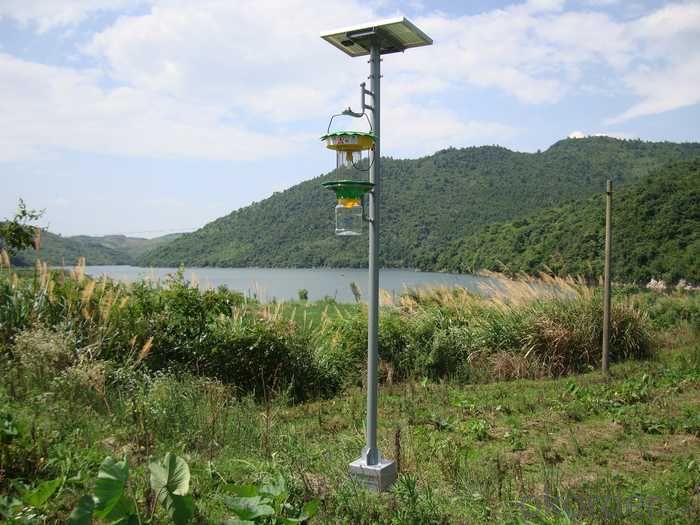
4. Photovoltaic Solar Insecticidal Light System Specification
| Light height(M) | 1.5-3 | 1.5-3 | 1.5-3 |
| Lighting poer(W) | 20 | 20 | 20 |
| working hours | 5 | 6 | 8 |
| Maximum battery storage | 1 day | 1 day | 1 day |
| Solar module power | 17V/40W | 17V/50W | 17V/60W |
| Battery (Ah) | 12V/27Ah | 12V/33Ah | 12V/42Ah |
| Controller | 12V/10A | 12V/10A | 12V/10A |
| Control method | time control,
rain control | light control, time control, rain control | light control, time control, rain control |
5. FAQ
1)Which places are suitable for this product?
This product is highly suitable for remote region without immediate access to power grid,such as orchards, tree farms, outdoor work sites and nature reservations.
2) Will you send samples first?
Yes.
3) Do you have articles made to order?
Yes. the surface color of lampost and its device can be changed accroding to specific requirement.
- Q:Do solar lights have a built-in GPS tracking feature for location monitoring?
- No, solar lights do not typically have a built-in GPS tracking feature for location monitoring. Solar lights are designed to harness sunlight and convert it into electricity, which is then stored in a battery for later use. They are primarily used for outdoor lighting purposes and do not require any location monitoring or tracking capabilities.
- Q:How long does it take to charge solar lights?
- The charging time for solar lights may vary depending on the specific model and the amount of sunlight available. On average, it takes around 6-8 hours of direct sunlight exposure to fully charge solar lights.
- Q:How do solar lights compare to traditional electric lights in terms of energy efficiency?
- Compared to traditional electric lights, solar lights exhibit significantly higher energy efficiency. The power supply of traditional electric lights mainly relies on the grid, which often entails the combustion of fossil fuels and transmission losses, thus diminishing their efficiency. Conversely, solar lights capture energy from the sun by employing photovoltaic cells, directly converting sunlight into electricity. This renewable energy source is virtually boundless and generates no greenhouse gases, rendering solar lights a considerably more sustainable choice. Furthermore, solar lights necessitate no external power source or wiring, thereby reducing energy losses during transmission. Consequently, not only do solar lights boast superior energy consumption efficiency, but they also possess a diminished environmental impact.
- Q:Can solar lights be used for remote or off-grid cabins?
- Yes, solar lights can definitely be used for remote or off-grid cabins. Since solar lights are powered by the sun, they do not require access to the electrical grid and can be an excellent alternative for lighting in remote locations. They offer a sustainable and cost-effective solution, providing ample illumination without the need for traditional electricity sources.
- Q:Are solar lights resistant to chemicals or harsh cleaning agents?
- Solar lights are generally resistant to chemicals and harsh cleaning agents. However, it is important to note that the specific resistance may vary depending on the brand and quality of the solar light. Most solar lights are designed to withstand exposure to outdoor elements, including rain, wind, and dust. They are typically made with durable materials such as weather-resistant plastic or stainless steel. These materials are usually resistant to common chemicals and cleaning agents used in household cleaning. However, it is recommended to avoid using harsh chemicals or strong cleaning agents on solar lights, as they may cause damage to the surface or internal components of the light. Instead, it is best to use mild soap and water for cleaning solar lights, which can effectively remove dirt and grime without causing any harm. Additionally, it is important to carefully follow the manufacturer's instructions for cleaning and maintenance to ensure the longevity and optimal performance of the solar lights.
- Q:Can solar lights be used in areas with high wind speeds?
- Yes, solar lights can be used in areas with high wind speeds. However, it is important to choose solar lights specifically designed to withstand strong winds. These lights typically have sturdy construction, secure mounting options, and aerodynamic designs to minimize the impact of wind. Additionally, regular maintenance and proper installation can help ensure the longevity and functionality of solar lights in such areas.
- Q:Do solar lights have adjustable timer settings for specific hours of operation?
- Yes, some solar lights have adjustable timer settings that allow users to set specific hours of operation according to their preferences.
- Q:Can solar lights be used for illuminating bike paths and trails?
- Yes, solar lights can be used for illuminating bike paths and trails. Solar lights have become increasingly popular for outdoor lighting purposes due to their energy efficiency and eco-friendly nature. They harness energy from the sun during the day and store it in batteries, which power the lights during the night. This means that they do not require any external power source or electrical wiring, making them a perfect choice for illuminating bike paths and trails in remote or off-grid areas. Solar lights designed for bike paths and trails are typically equipped with high-quality LED bulbs that provide bright and focused illumination, ensuring safety and visibility for cyclists and pedestrians. They are often designed with motion sensors, which can further enhance safety by automatically turning on as soon as someone approaches the area. Furthermore, solar lights are easy to install and maintain. They can be mounted on poles or attached to existing structures along the bike paths and trails, eliminating the need for complex installation procedures. Additionally, since solar lights do not rely on electricity from the grid, they have lower operating costs and require minimal maintenance. In summary, solar lights are an excellent option for illuminating bike paths and trails. They offer energy efficiency, environmental friendliness, easy installation, and low maintenance, making them a practical and sustainable choice for enhancing safety and visibility in outdoor spaces.
- Q:What are the advantages of using solar lights?
- There are several advantages of using solar lights. Firstly, solar lights are extremely energy-efficient as they harness the power of the sun to generate electricity. This means that they do not require any external power source or electricity grid connection, resulting in significant cost savings on electricity bills. Secondly, solar lights are environmentally friendly. They do not emit any harmful carbon emissions or pollutants during their operation, unlike traditional lights that rely on fossil fuels. By using solar lights, individuals can contribute to reducing their carbon footprint and combat climate change. Additionally, solar lights offer great flexibility in terms of installation. Since they do not require any wiring or extensive infrastructure, they can be easily installed in remote locations or areas where it is difficult to access electricity. This makes them an ideal choice for outdoor lighting in gardens, pathways, and parking lots. Moreover, solar lights are low-maintenance. Once installed, they require minimal upkeep as they are built with durable materials and can withstand various weather conditions. They typically have a longer lifespan compared to traditional lights, reducing the need for frequent replacements and maintenance costs. Lastly, solar lights improve safety and security. By illuminating dark areas, they can deter potential intruders and enhance visibility, making them a valuable addition to home security systems. Furthermore, during power outages or emergencies, solar lights can continue to provide illumination, ensuring safety and peace of mind. Overall, the advantages of using solar lights include energy efficiency, environmental friendliness, easy installation, low maintenance, and improved safety. By embracing solar lighting solutions, individuals can enjoy the benefits of sustainable and cost-effective lighting options.
- Q:How long does it take for solar lights to charge?
- The charging time for solar lights can vary depending on various factors such as the amount of sunlight available, the size and efficiency of the solar panel, and the capacity of the battery. On average, it can take anywhere from 4 to 12 hours to fully charge solar lights under optimal conditions.
1. Manufacturer Overview |
|
|---|---|
| Location | |
| Year Established | |
| Annual Output Value | |
| Main Markets | |
| Company Certifications | |
2. Manufacturer Certificates |
|
|---|---|
| a) Certification Name | |
| Range | |
| Reference | |
| Validity Period | |
3. Manufacturer Capability |
|
|---|---|
| a)Trade Capacity | |
| Nearest Port | |
| Export Percentage | |
| No.of Employees in Trade Department | |
| Language Spoken: | |
| b)Factory Information | |
| Factory Size: | |
| No. of Production Lines | |
| Contract Manufacturing | |
| Product Price Range | |
Send your message to us
Photovoltaic Solar Insecticidal Light System
- Loading Port:
- Tianjin
- Payment Terms:
- TT or LC
- Min Order Qty:
- 50 set
- Supply Capability:
- 50 set/month
OKorder Service Pledge
OKorder Financial Service
Similar products
New products
Hot products
Hot Searches
Related keywords

